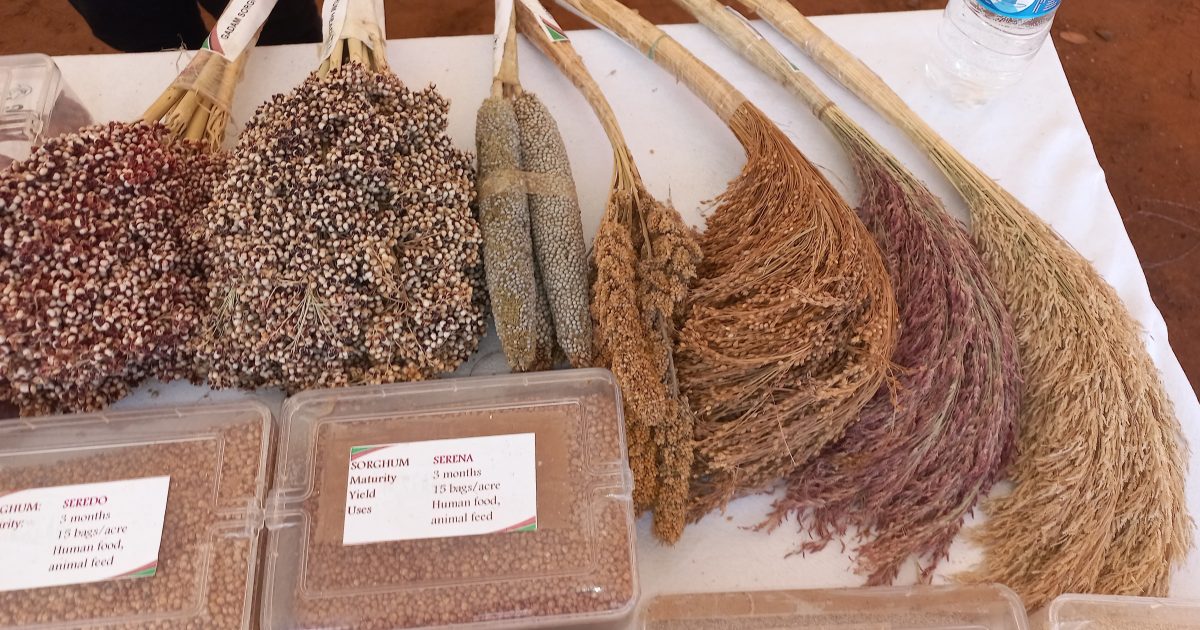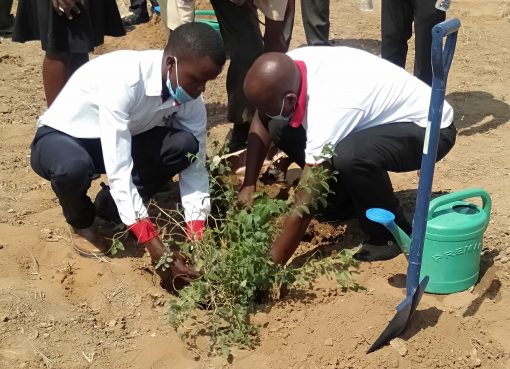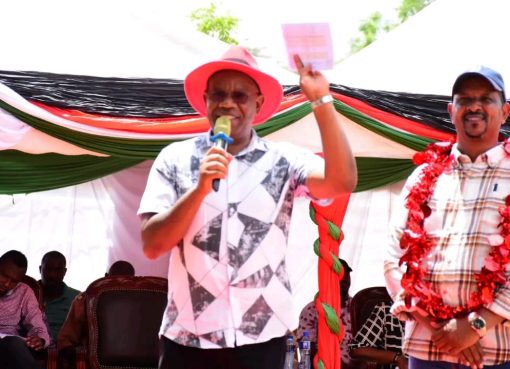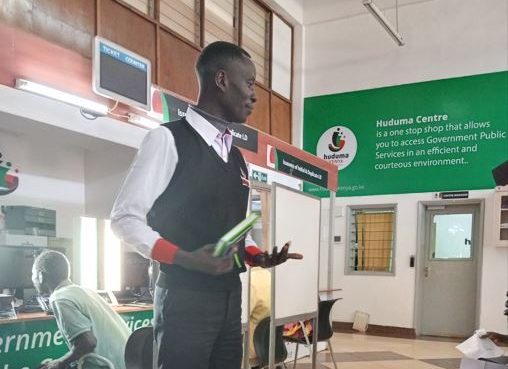Farmers in Eastern region a rallying behind a call to the government for provision of mechanized tools to ease the harvesting of process of millet and sorghum to attract more players in production.
Their core belief is that introducing modern technology into harvesting will significantly curtail losses and make these indigenous grains more enticing to younger generation to join the production system.
They expressed optimism that the mechanised harvesting will not only cut on costs and time consumed extracting grains manually but reduce of post-harvest losses incurred
The appeal was voiced during celebrations marking the “World Food Day 2023” at the KALRO Kiboko Research Centre in Makueni County..researchers shed light on the remarkablr performance of the cereals despite minimal rainfall, underscoring the persistent challenges in harvesting faced by majority farmers.
As the nation observed the event under the theme, “Water is life, water is food. Leave no one behind” farmers urged the government to take strategic measures to bolster food security particularly in regions with below average rainfall.
Notably around at least 60 percent of the farming population in such areas comprises young individuals who could be wooed into agriculture through adoption of contemporary farming techniques.
One farmer emphasized the prevailing use of laborious repetitive and manual traditional processes in semi arid regions where sorghum and millet thrived
“Various traditional methods of processing are still widely used, particularly in these parts of the semi-arid tropics where sorghum and millets are grown but the techniques are laborious, monotonous and literary manual” a farmer told the Kenya News agency (KNA)
Samuel Nzongolo an experienced farmer from, kibwezi East who cultivates millet ,sorghum and green grams acknowledged the existing demand for these indigenous cereals but expressed concern whether youthful generation would embrace the crop due to the labour intensive nature of the traditional harvesting methods.
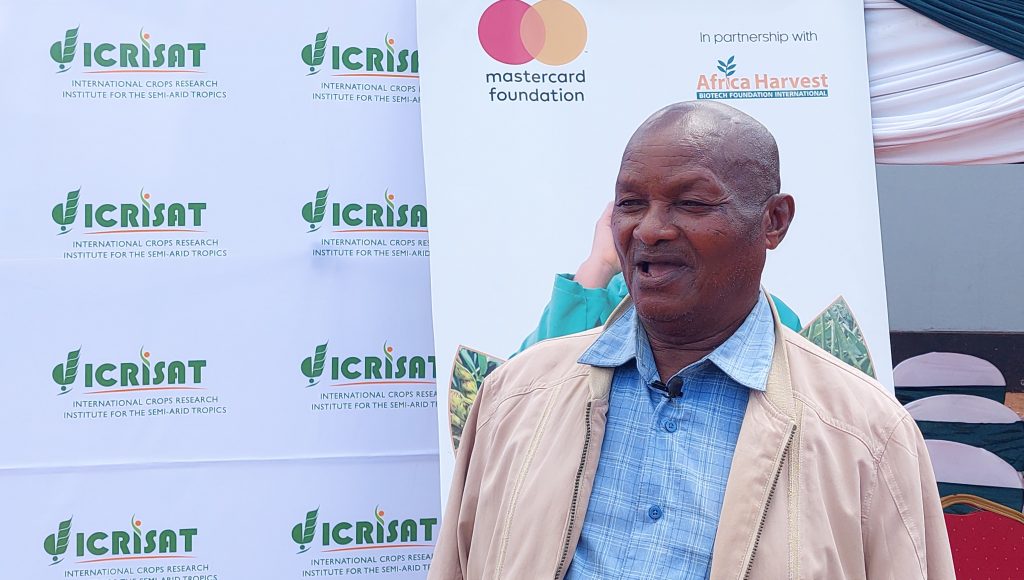
He urged the government to consider getting farmers combined harvesters for the crops so that many youths could get the interest to embrace the production of the cereals.
“ The youth want easy, are in the technology world and therefore should be enticed to join farming by introducing mechanized system of harvesting of these crops and am sure they will embrace it” , Nzongolo said
He said that he used to plant maize but due to change of weather and lack of rain with minimal produce he started growing sorghum, Millet and Green grams that do very well and have ready market, the only challenge hindering them harvesting .
Africa Harvest Biotechnology Foundation International (Africa Harvest) representative Yvonne Mwende said highlighted the significance of “International Year of the Millets” encompassing finger millets and pearl millet, are robust cereals with the potentials to revolutionize food production, nutrition, and climate resilience.
Mwende stressed on the pivotal role of these resilient crops in water scarce conditions aligning seamlessly with the theme of the year. she also shared insights into Africa Harvest efforts to create income opportunities for the youth notably through the DTC 4 Youth Jobs Creation program
This program Scales the commercialization of Drought Tolerant Crops Technologies providing opportunities for young Kenyans in agriculture sector.
In collaboration with the Mastercard Foundation Africa Harvest lead partner, ICRISAT, and KUZA One, the program focuses on eight key value chain including sorghum, finger millet, pearl millet, groundnuts, pigeon pea, green grams, poultry, and fish, all while championing mechanization.
Mwende said Africa Harvest program had initiated provision of mechanized such as threshers and shellers to farmers and is actively training young farmers tp produce such tools in the future.
The initiative span across ten counties in western and eastern Kenya, targeting over 150,000 young individuals offering hope and opportunity amidst unpredictable weather patterns. The counties include Tata Taveta Makueni, Machakos ,Kitui ,Elgeyo Marakwet, Busia Tharaka Nithi ,Meru , Homabay and Siaya.
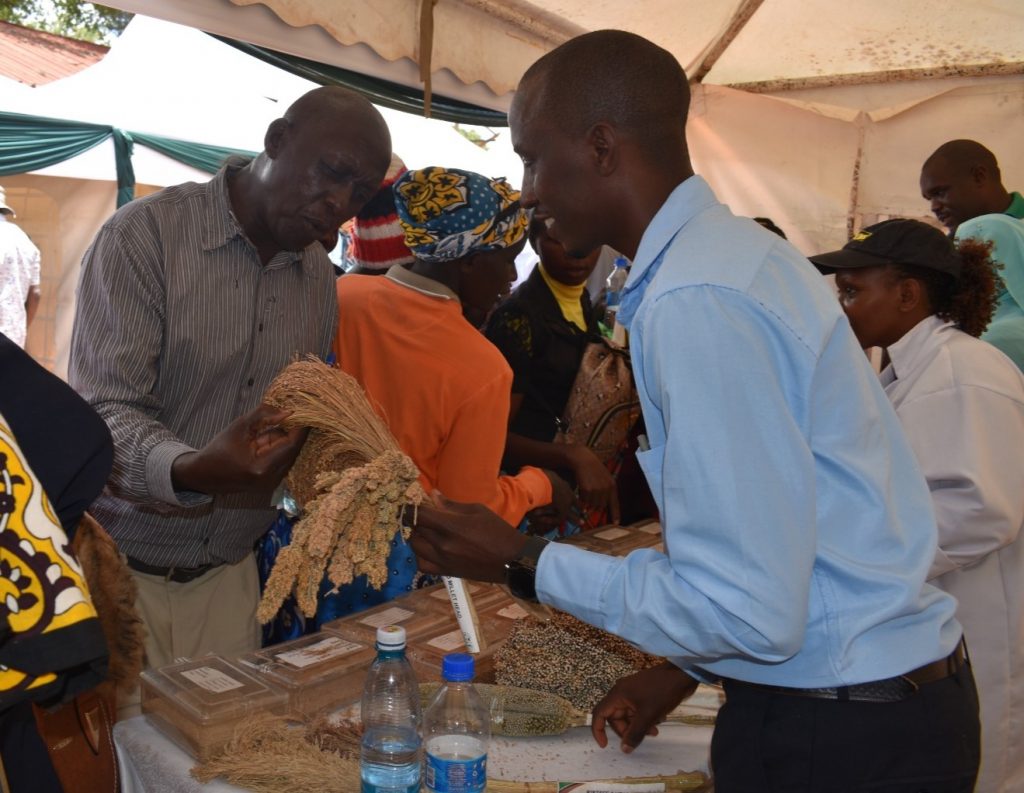
Through the innovative Trainer of Trainers (TOT) model, which fosters community-based expertise, we empower young farmers, the program strives to optimize productivity yields and sustainability.
Mwende underscored the initiative innovative communication tools, designed to simplify income generating opportunities for young participants and ensure they reap the benefit of agricultural progress.
An inspiring success story with the program is that of Kennedy Joseph, a young farmer from Siaya County who embrace sorghum cultivation and multiplied his earning five fold , marking a transformative change in his life.
In summary, millet and other resilient stand as key players in shaping a nourished future and advancing the journey towards a hunger free world. The profound connection between water and food along with the transformative potentials of millet warrants our attention.
By Wangari Ndirangu


